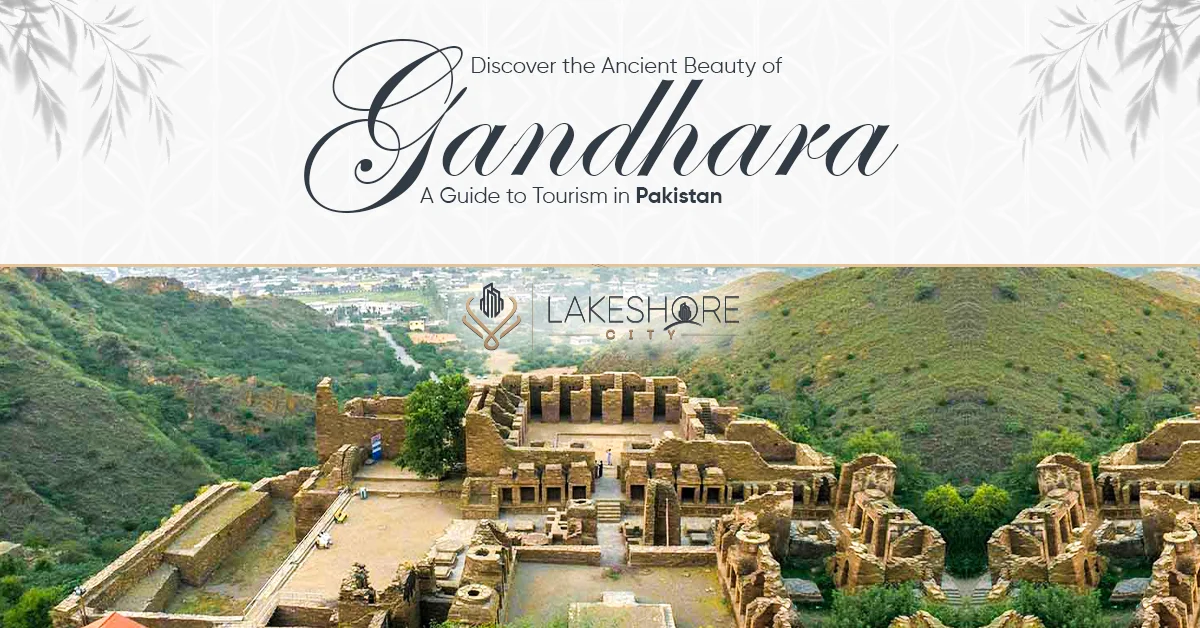Introduction to Gandhara
Gandhara has a unique historical position as a territory with immense cultural, religious, and political significance. Its place in the Indian subcontinent, in the northwest, is known to include a portion of modern-day Pakistan and Afghanistan.
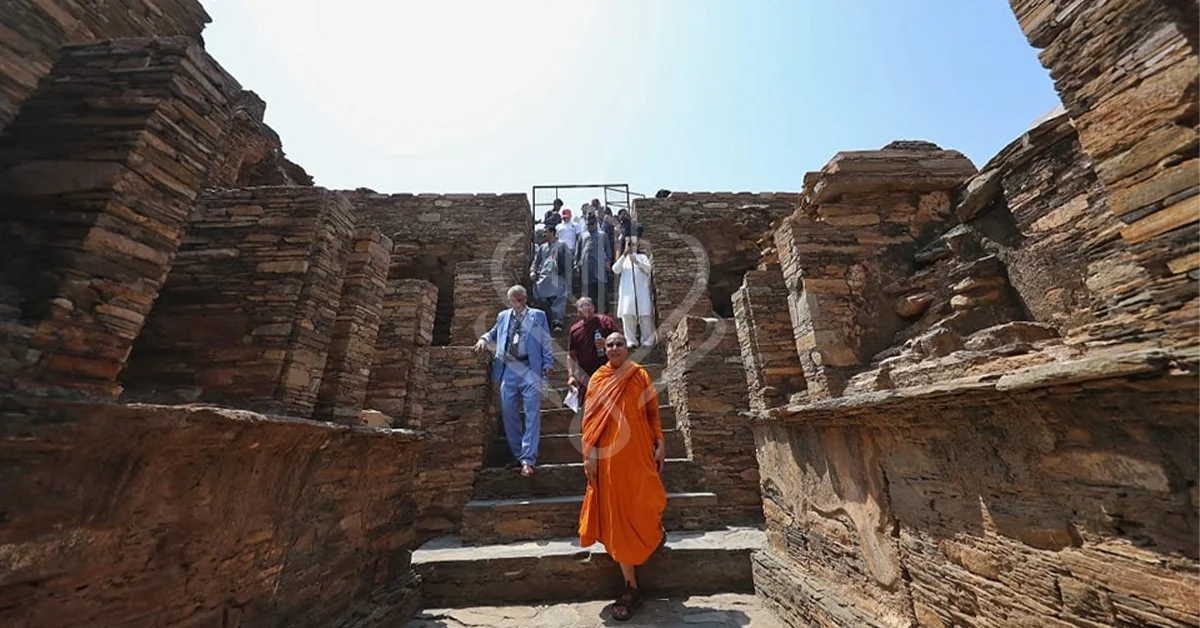
The historical importance of Gandhara is derived from its function as a crossroads for trade and cultural interchange between the Indian subcontinent, Central Asia, and the Mediterranean. It served as a melting pot of several civilizations. An essential part of Gandhara’s history that dates back to the third century BCE is its connection to Buddhism.
As a result of the blending of Indian and Hellenistic aesthetic traditions, the area saw the flowering of Buddhist art and architecture, distinguished by the distinctive Greco-Buddhist style. This artistic legacy has had a long-lasting influence on Gandhara’s cultural landscape, making it an essential part of the story of ancient history.
Exploring the Ancient Ruins
Taxila is an ancient city with significant historical value that is located in modern-day Pakistan. It was one of the most effective educational institutions in antiquity and was a crucial crossroads for trade, religion, and cultural exchanges between diverse civilizations.
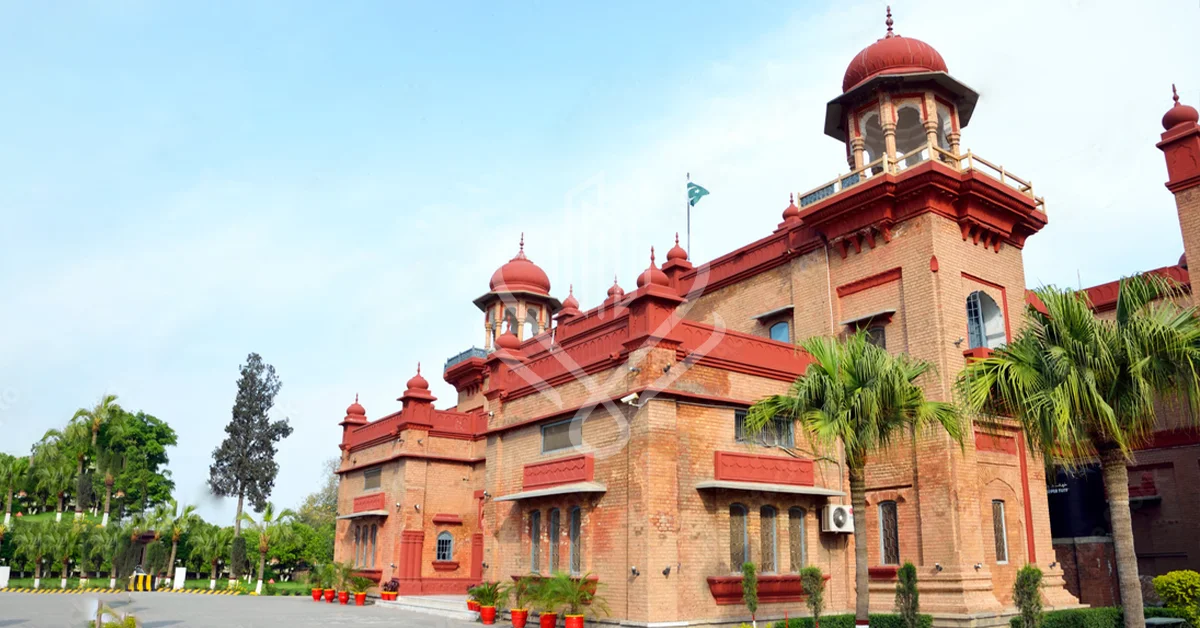
Taxila was a renowned center of Buddhist learning and is mentioned in historic literature like the Mahabharata dating back to at least the 5th century BCE. Due to the city’s advantageous location at a significant intersection of trade routes, it was possible to interchange information, works of art, and goods, which helped to create its thriving multicultural history. Due to wars and changes in trade routes, Taxila’s importance waned throughout time, but its legacy is still a priceless source of information about ancient civilizations.
Top Taxila Archaeological Sites
Taxila is home to numerous intriguing archaeological sites that provide light on its ancient past. The Taxila Museum has a sizable collection of items unearthed from the area and is among the most notable. Another noteworthy location is the 3rd-century BCE Dharmarajika Stupa, which exhibits the influence of Mauryan architecture.
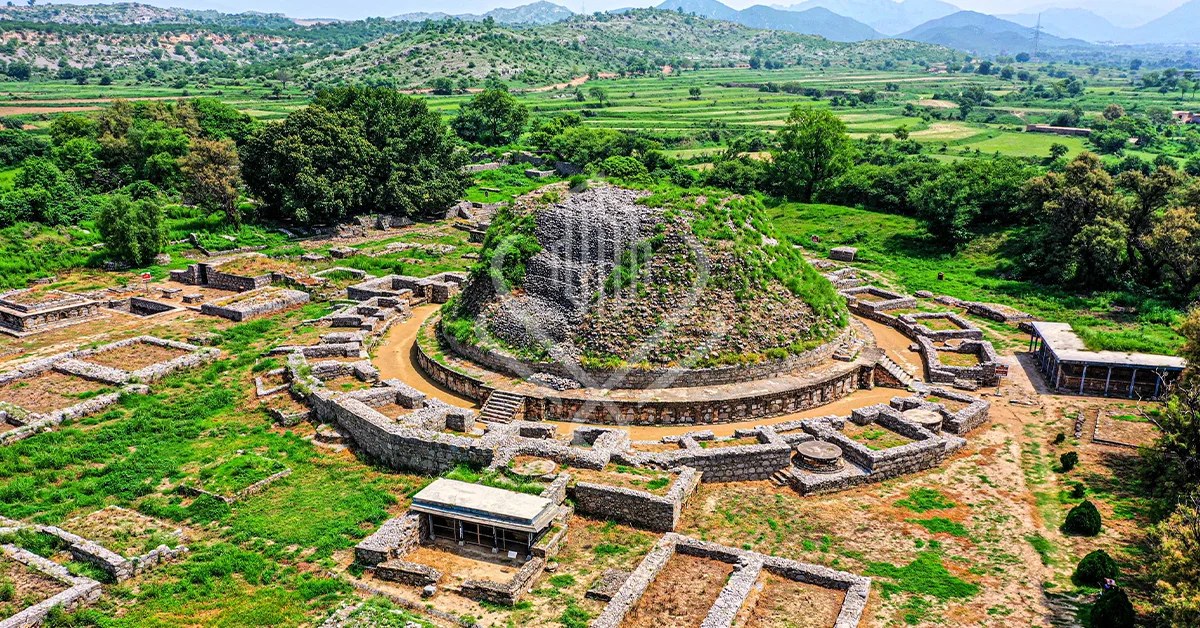
The Sirkap remains show a well-planned city with Hellenistic features, illustrating the confluence of the Greco-Buddhist cultures. Furthermore, the Jaulian Monastery, a Buddhist complex built in the second century CE, features elaborate stucco decorations and carvings that look into early monastic life.
Relics and Notable Artefacts
The Taxila region has produced a treasury of artefacts and relics that provide fascinating details about its historical significance. The statues and friezes that show Buddha and numerous Bodhisattvas in Taxila’s Gandhara art exhibit a peculiar combination of Indian and Hellenistic artistic influences.
The legendary Taxila copper-plate inscription, written by the Kushana king Kanishka, contains important historical details concerning that time’s city government and society. Various ancient coins, pottery, and figurines of terracotta discovered in the area also contribute to our understanding of the city’s prehistoric culture and trade.
Description of Takht-i-Bahi
A historic Buddhist monastic complex called Takht-i-Bahi, which translates to “Throne of Origins” in Persian, can be found in Pakistan’s Khyber Pakhtunkhwa province’s Mardan District. It is one of the area’s most prominent and well-preserved archaeological sites, dating to the first century CE. The location, on a mountaintop 500 feet (152 meters) high, provides breathtaking views of the surroundings.
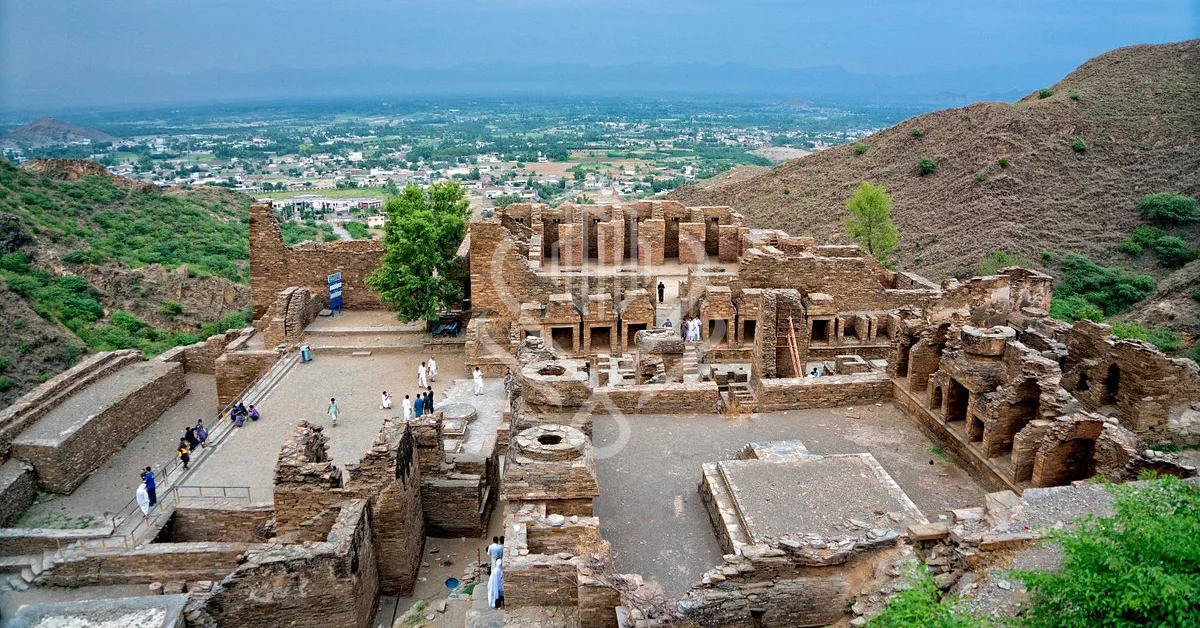
The Kushan Empire, a solid and significant cultural empire that ruled Central and South Asia, was in power when the monastic complex was founded. Takht-i-Bahi was an essential center of learning and spirituality in its era since it housed Buddhist monks’ religious and educational needs.
Architectural Features
- Takht-i-Bahi boasts an impressive architectural design that combines Hellenistic and Gandharan styles. The complex is divided into several distinct areas.
- Stupas: The site includes several stupas, which are dome-shaped structures that house sacred relics or represent significant events in Buddha’s life. These stupas were important pilgrimage points for Buddhists.
- Monastic Cells: The complex comprises numerous monastic cells where Buddhist monks resided and pursued their spiritual practices. These cells were usually small, austere rooms arranged around open courtyards.
- Assembly Halls: Takht-i-Bahi features large assembly halls, also known as viharas, where religious gatherings, teachings, and discussions occur. These halls were adorned with sculptures and carvings depicting Buddhist motifs.
- Main Stupa: The main stupa stands at the heart of the complex, considered the entire site’s focal point. This central stupa was likely the most revered and spiritually significant structure in Takht-i-Bahi.
Buddhist Relics and Sculptures
Numerous Buddhist artefacts and sculptures have been found all across the monastic complex, providing essential insights into the beliefs and aesthetic accomplishments of the time. These artefacts may be holy bones, ashes, or items connected to the Buddha or his followers.
Takht-i-Bahi’s sculptures are works of excellent craftsmanship and aesthetic skill. The lives of Buddha, Bodhisattvas, and other holy creatures are just a few examples of the many facets of Buddhism they portray. Scenes from Jataka tales, which describe the Buddha’s previous lives before attaining enlightenment, are also depicted in the carvings.
Numerous statues are made of stone and stucco and offer a glimpse into the popular artistic styles of the Kushan era. These sculptures are a monument to the commitment and talent of the artists who made them, thanks to their delicate details and tranquil attitudes.
Takht-i-Bahi, a UNESCO World Heritage Site since 1980, is still a crucial archaeological site that draws academics and visitors who want to learn more about the complex’s rich history and cultural significance.
Butkara Stupa: The Iconic Structure
In the Swat Valley of Pakistan, close to Mingora, is the Butkara Stupa, also known as the Butkara Stupa or Butkada Stupa. The stupa is an important archaeological site and a reminder of the area’s lengthy cultural and religious past.
Buddhist stupas are significant religious structures that protect the relics of the Buddha or other renowned people. They serve as sites of pilgrimage and meditation for Buddhists and indicate their cosmology.
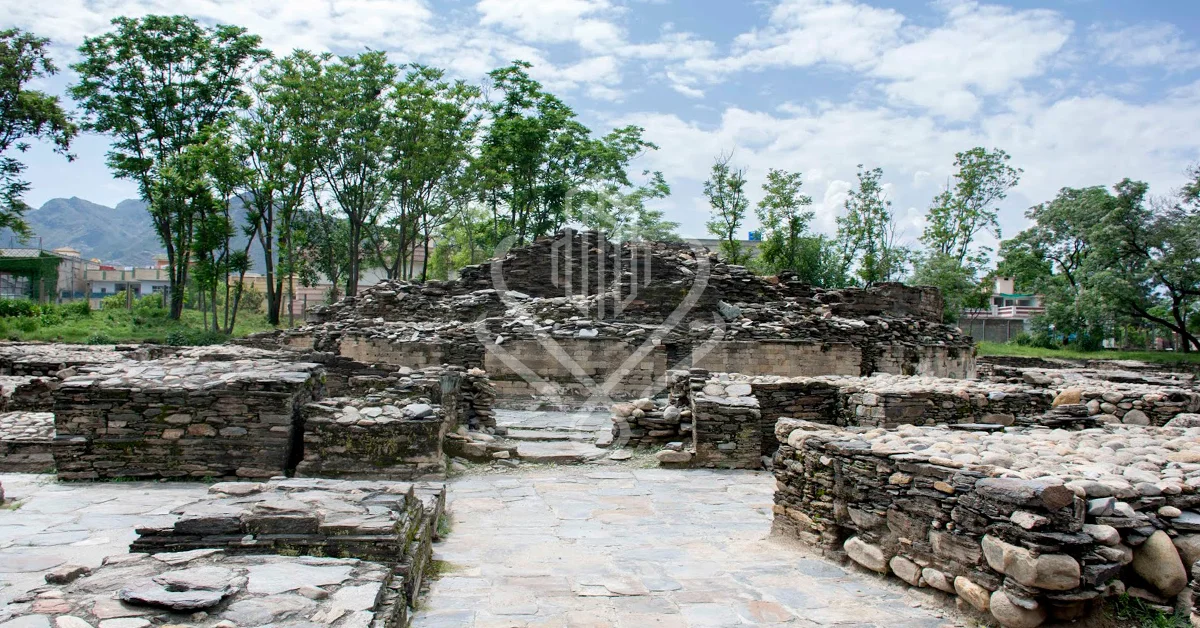
The Butkara Stupa, linked to the famous Mauryan Emperor Ashoka, is thought to have existed as early as the second century BCE. Ashoka is believed to have constructed countless stupas around his empire after converting to Buddhism.
The Greco-Buddhist and Gandharan architecture schools are represented in the Butkara Stupa, which displays a fusion of architectural styles. In the Indian subcontinent’s northwest during the rule of the Indo-Greek rulers, a synthesis of Hellenistic and Buddhist elements gave rise to the Greco-Buddhist style.
The stupa has a sturdy base that holds up a hemispherical dome formerly crowned by a harmika (a square platform with a central pillar). Typically, Harmikas carry an umbrella-like object representing the Bodhi tree, the tree under which the Buddha obtained enlightenment.
Gandhara’s Cultural Heritage
Vital elements of Gandhara’s cultural legacy include the following:
Greco-Buddhist Art
The emergence of Greco-Buddhist art, which resulted from exchanges between Hellenistic Greek and Indian Buddhist traditions, is one of Gandhara’s most noteworthy contributions to the evolution of world art. Blending Buddhist iconography with Greek and Roman artistic skills defines this creative movement. The sculptures and reliefs in Buddhist stupas and monasteries are particularly striking examples.
Buddhist Stupas and Monuments
Gandhara is renowned for having many Buddhist monasteries and other places of worship. Stupas were initially constructed to house the remains of the Buddha or other revered monks, and they later developed into significant Buddhist pilgrimage sites.
Sculptures and Carvings
Gandharan sculptures’ excellent craftsmanship and attention to detail are well known. In their works, the artists frequently portrayed scenes from the lives of the Buddha, Bodhisattvas, and other Buddhist deities. Usually, these sculptures exhibit a seamless fusion of Indian and Hellenistic aesthetic elements.
Iconography
Gandhara greatly influenced the growth of Buddhist iconography. Buddhist art was influenced by the distinctive depictions of Buddha and Bodhisattvas made by the area’s artisans and painters and spread throughout Asia.
Gandharan School of Art
The Gandharan School of Art, which had a long-lasting influence on the art of the larger region, including Central Asia and Southeast Asia, was born out of the artistic legacy of Gandhara.
Overview of the Gandhara Art Style
The Gandhara region, which includes sections of modern-day northern Pakistan and eastern Afghanistan, is where the distinctive Gandhara art style first appeared. It peaked during the first and fifth centuries CE and is chiefly credited with facilitating the development of Buddhism in the area.
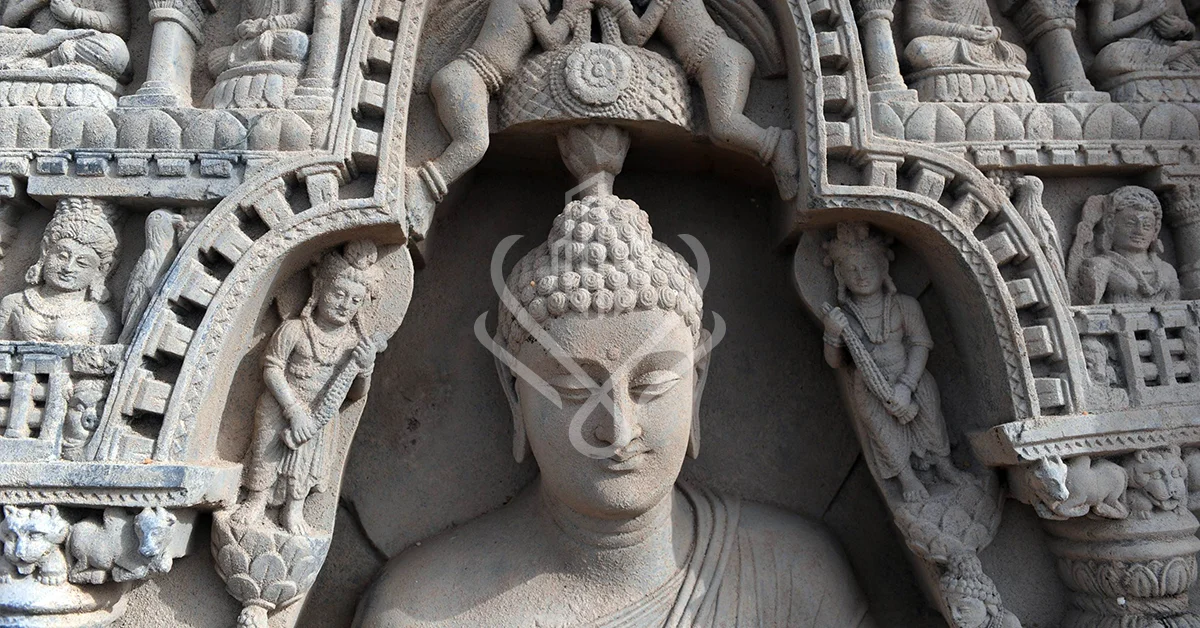
Essential traits of the Gandhara art form include:
Greco-Roman Influence
The considerable Greco-Roman influence of Gandhara art is one of its distinguishing characteristics. This occurred due to the area’s trade and conquest interactions with Hellenistic Greece and, later, the Roman Empire—the visual aesthetic results from blending indigenous Indian creative traditions with Greek and Roman techniques.
Buddhist Iconography
Buddhist themes and iconography predominate in Gandhara art. It features depictions of the Buddha’s biography, narratives of his past lives as a Bodhisattva, and various Buddhist deities and symbols.
Gandhara’s Art
Gandhara’s art is renowned for its realistic and naturalistic depictions of human beings. The artists devoted close attention to facial expressions and physical details, showing the influence of classical Greek art.
Use of Schist Stone
Schist stone, a metamorphic rock widespread in the area, was frequently used to create Gandharan sculptures. This stone offered a smooth surface for artists to work on and was perfect for complex designs.
Halo and Wavy Hair
The existence of a halo behind the Buddha’s head, influenced by the Greco-Roman artistic tradition, is a defining characteristic of Gandhara Buddha images. Another common depiction of the Buddha is with hair that is curly and wavy.
The Gandhara Trail: Journey through History
Join “The Gandhara Trail” to begin an enthralling historical journey. As you travel through this famous region’s recognizable monuments and sacred locations, uncover the mysteries of ancient art, culture, and spirituality. Experience the historical tapestry of Gandhara in all its beauty and importance.
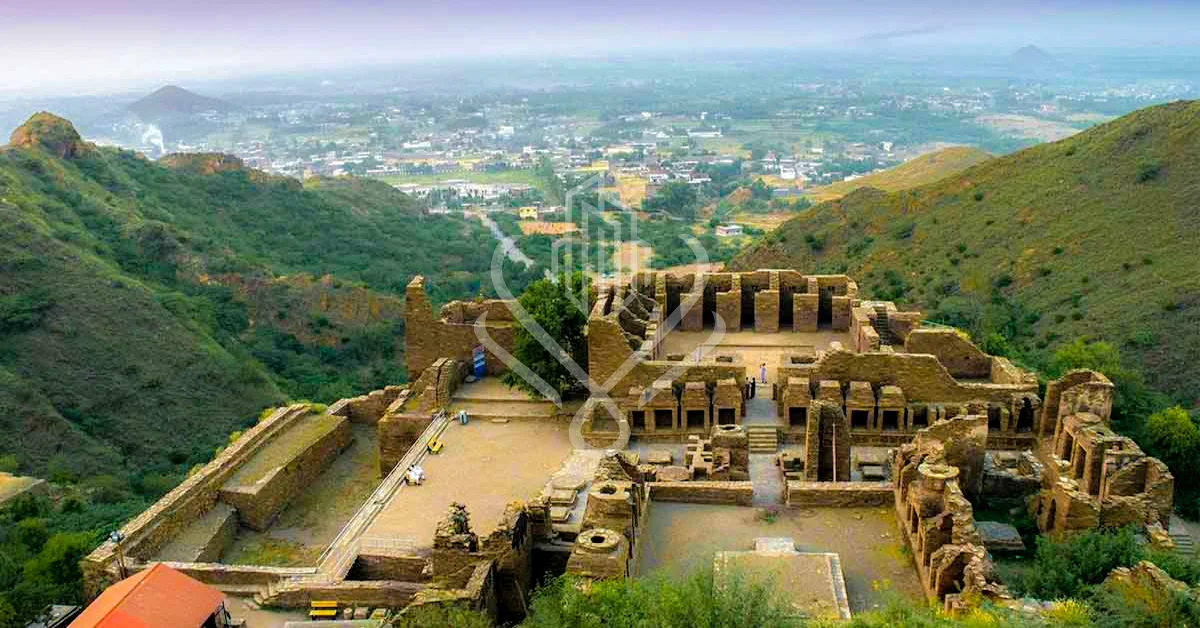
Peshawar: Gateway to Gandhara
Peshawar sometimes called the Gateway to Gandhara, is notable for serving as the starting point of the historic Gandharan civilization. This city, located in the productive Peshawar Valley and has seen multiple dynasties rise and fall, is a melting pot of cultures and traditions. You can hear the echoes of the past echoing through Peshawar’s historic bazaars and impressive landmarks as you stroll through the city’s busy streets.
The city’s magnificent collection of Gandharan art and architecture is a testament to its rich heritage, and several museums and archaeological sites provide a window into the region’s illustrious past. Travellers are invited to take an enthralling voyage through time and learn the mysteries of an ancient civilization, thanks to Peshawar’s unique location as the Gateway to Gandhara.
Swat Valley: The Land of Beauty
The magnificent Swat Valley, sometimes known as “The Land of Beauty,” is in Pakistan’s hilly northwest. This lovely valley is known for its breathtaking vistas, verdant meadows, clean rivers, and snow-capped mountains that form a spellbinding backdrop. The old Swat Valley has a rich cultural legacy that contributes to its charm.
The warm welcome of the residents, the serene atmosphere, and the wealth of historical attractions, including venerable Buddhist stupas and monasteries, all draw visitors. Travellers seeking an exceptional experience amid nature will find Swat Valley a veritable paradise thanks to its natural beauty and cultural richness.
Mardan: Exploring Buddhist Sites
Mardan, a city in Pakistan’s Khyber Pakhtunkhwa province, is a veritable gold mine for tourists visiting Buddhist temples and learning more about the area’s fascinating past. Ancient artefacts, monasteries, and stupas may be found around the city, providing a look into its illustrious past as a prominent Buddhist civilization center.
Tourists can take an enthralling trip through time by visiting Buddhist archaeological monuments like the Takht-i-Bahi Monastery, a UNESCO World Heritage Site. This magnificent collection of stupas and monastic structures is perched atop a hill and offers stunning views of the surroundings. The intricate craftsmanship and architectural design discovered here proves the Gandharan era’s superior creative quality.
Gandhara Tourism Today
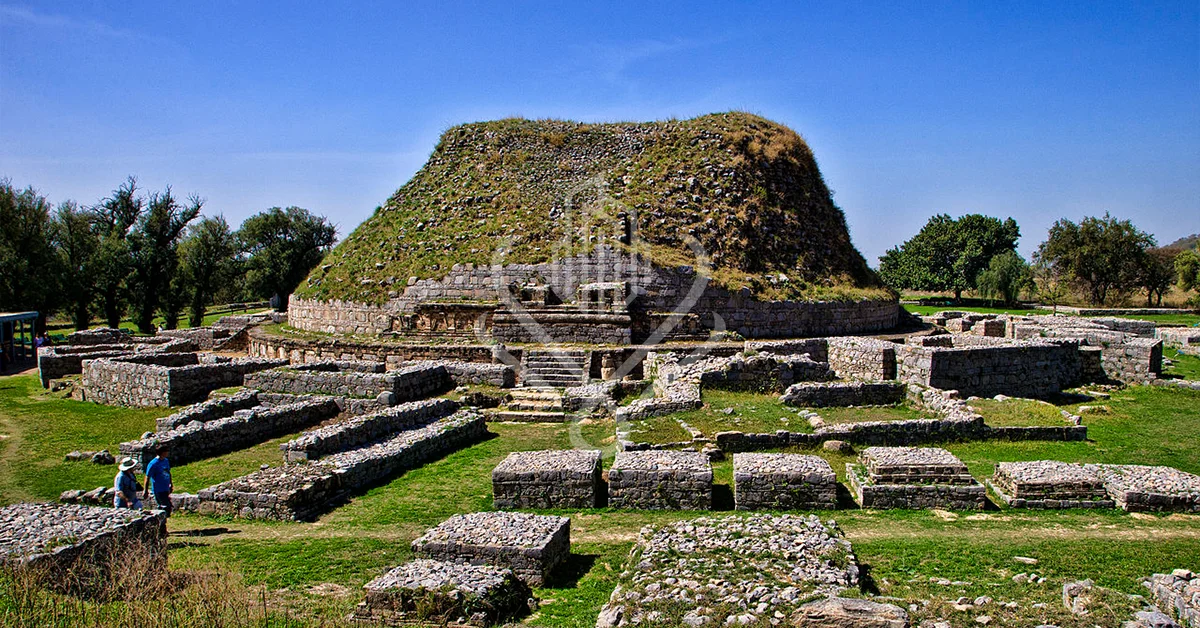
As of 2021, some significant elements of Gandhara tourism included:
Buddhist Heritage
The main draw for tourists in Gandhara was its Buddhist history. Travellers interested in learning about the development of Buddhism on the Indian subcontinent were enthralled by the ancient stupas, monasteries, and complex sculptures found in locations such as Taxila, Peshawar, Swat Valley, and Mardan.
Archaeological Sites
The region of Gandhara is home to a number of archaeological sites that exhibit the blending of Indian and Greco-Roman aesthetic influences. These locations offered insightful information on the cross-cultural interactions in the area throughout the ages.
Cultural Tours
Travel agencies provided cultural tours that concentrated on the historical monuments of Gandhara, allowing guests to explore the artefacts and discover the area’s past through guided tours.
Opportunities for Education and Research
Gandhara drew historians, archaeologists, and researchers interested in exploring its cultural and historical relevance. Academic study opportunities were abundant due to well-preserved artefacts and inscriptions.
Local Handicrafts and Souvenirs
Visitors could browse and buy local products and souvenirs, including traditional Pakistani crafts, artefacts with Buddhist themes, and copies of Gandhara art.
Enhanced Infrastructure
The Pakistani government has been investing in enhancing infrastructure, lodging, and transportation facilities to accommodate the rising number of visitors after realising the potential of Gandhara tourism.
Transportation Options to Gandhara
Air Travel
Flying to significant airports close to the area is the most practical way to get to Gandhara. Islamabad International Airport and Bacha Khan International Airport in Peshawar are the two main airports that act as entry points to Gandhara. Road travel can be continued to several locations in the Gandhara region.
Road Travel
Gandhara is reachable from some Pakistani cities and towns due to its excellent road connectivity. To get to the major cities, such as Peshawar, Mardan, and Swat Valley, the beginning places for seeing Gandhara’s ancient sites, tourists can choose between private or public buses, vans, or taxis.
Train Travel
For travellers from other parts of Pakistan, train services are available to Peshawar, Mardan, and nearby regions. However, train travel may take longer compared to air or road options.
Accommodation Choices for Tourists
- Tourists have the following options for lodging: a. Hotels and resorts: Peshawar, Mardan, and Swat Valley all have a selection of hotels and resorts to fit various budgets. Visitors can choose mid-range, premium, and boutique hotels that offer cosy lodgings with contemporary conveniences.
- Guesthouses and Inns: For a more authentic experience, travellers may want to stay in guesthouses and inns, which frequently provide a cozy setting and the opportunity to mingle with locals.
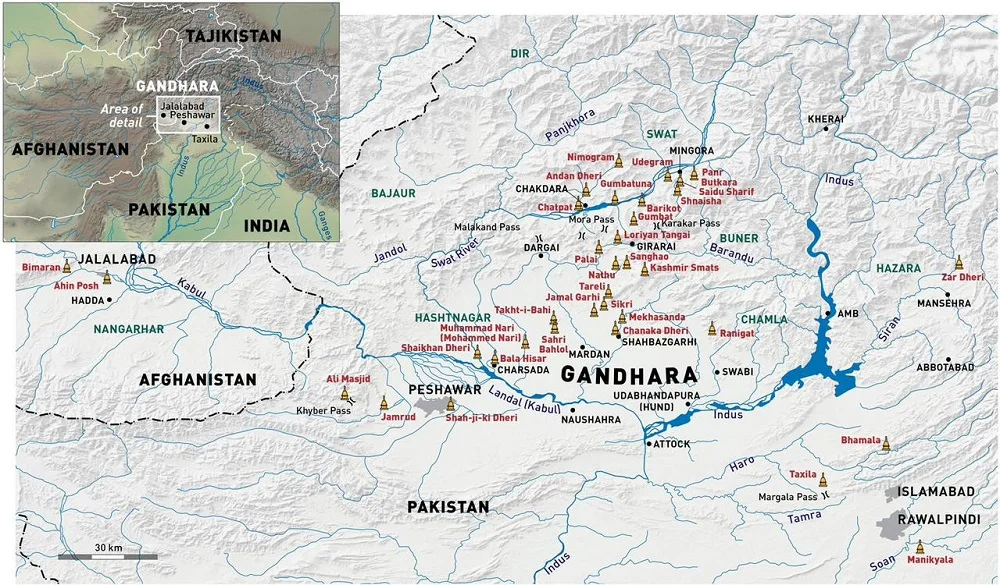
Eco-Lodges
In the picturesque settings of Swat Valley and other rural locations, eco-lodges offer green lodging ideal for tourists wanting a nature-focused experience.
d. Camping is permitted in some parts of Gandhara, including the Swat Valley and its lovely meadows, under certain restrictions. Campers can set up their tents and take in the breathtaking scenery.
Overview of Cultural Festivals in Gandhara
Spring Festival, or Jashn-e-Baharan Jashn-e-Baharan, which welcomes spring, is observed throughout Pakistan, including the Gandhara region. This festival features a variety of vibrant activities, such as flower displays, performances of traditional music and dance, and exhibitions of regional handicrafts.
The Shandur Polo Festival is a one-of-a-kind celebration held at the Shandur Pass, which connects Chitral and Gilgit-Baltistan, every year in July. The festival offers cultural performances, traditional dances, and exciting polo matches between various regional teams.
The Buddha Festival, sometimes called Baisakhi, is a significant cultural occasion for Buddhists in the Gandhara region. It commemorates the birth of Gautama Buddha and is observed with religious processions, supplications, and donations at stupas and monasteries.
Eid Festivals
The two most important Islamic holidays, Eid-ul-Fitr and Eid-ul-Adha, are widely observed throughout the Gandhara region. As mosques and other spaces are decorated with lights and ornaments, families gather to eat holiday dinners and exchange gifts.
Chapli Kebab
A well-known Pashtun delicacy, chapli kebab is a tasty minced meat patty seasoned with herbs, onions, and spices before being shallow-fried to a crisp.
Usually, lamb or chicken, the soft chunks of meat in Shinwari Karahi, are cooked in a traditional karahi (wok) with tomatoes, green chilies, and delicious spices.
Kabuli Pulao
A rice dish with Afghan influences, Kabuli Pulao, is made with aromatic long-grain rice, soft chunks of meat (often lamb or chicken), sweet raisins, and carrots.
Mantu: This mouthwatering regional delicacy is made of steamed dumplings stuffed with flavorful minced meat and onions and served with yogurt and a tomato-based sauce.
Charsi Tikka
Charsi Tikka is a delectable barbecue dish that features tender chunks of marinated meat, frequently lamb or chicken, expertly grilled and served with naan (flatbread) and chutney.
Gandhara Symposium Event 2023
Dr. Ramesh Kumar Vankwani, the leader of the Prime Minister’s Task Force for Gandhara Tourism, announced on Thursday that the Institute of Strategic Studies Islamabad (ISSI) and the Directorate of Archaeology and Museums, Khyber Pakhtunkhwa, will collaborate to host the 3-day Gandhara Symposium 2023 beginning on July 11.
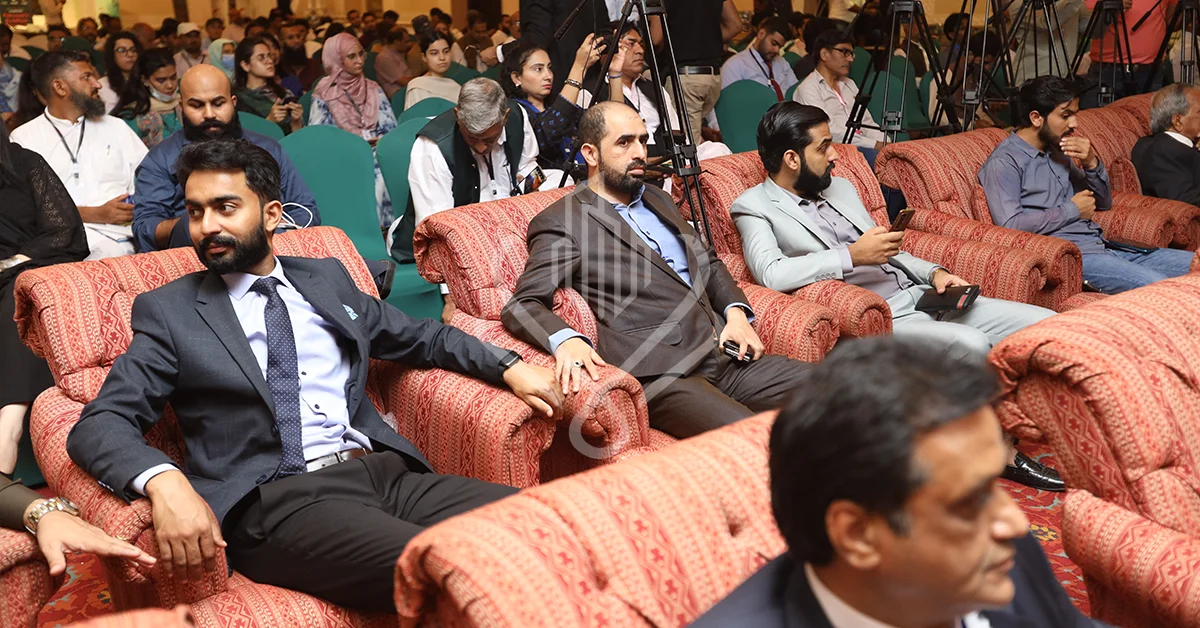
He told APP that this combined event will bring together academics, researchers, practitioners, and industry experts to discuss intercultural cooperation. Rich Gandharan ruins and history have the potential to be promoted and revived, and religious tourism could benefit from a better understanding of Buddhism.
According to Dr. Ramesh Kumar, the conference sought to investigate and close the academic and cultural barriers, paving the road for peace. According to Dr. Vankwani, everything has been planned for the three-day international Gandhara conference.
He said that foreign delegations and religious leaders from nations with most Buddhists, including Korea, China, Sri Lanka, and Thailand, have confirmed their attendance at the meeting. The conference attendees will also be given a unique tour of historical landmarks.
Conclusion
In conclusion, Gandhara’s timeless beauty entices visitors on an enthralling journey through time and culture. Gandhara’s rich historical legacy, enthralling scenery, and thriving cultural traditions serve as a guide for tourism in Pakistan. Gandhara gives visitors a singular and enriching experience, from viewing the elaborate sculptures and Buddhist temples that mark the region’s past to savoring the flavors of local food.
One cannot help but be enthralled by the echoes of past civilizations that have permanently altered the terrain as they become immersed in this legendary land’s splendor. Gandhara is a timeless example of the attractiveness of Pakistan’s cultural and historical heritage, with its warm welcome, various offerings, and a hint of mystery.
FAQs
Q1. What is Gandhara known for?
Ans. Gandhara is known for its rich cultural heritage, particularly its historical significance as an ancient Buddhist civilization with intricate sculptures and archaeological sites.
Q2. How do I get to Gandhara?
Ans. You can get to Gandhara by air, flying to significant airports like Islamabad International Airport or Bacha Khan International Airport in Peshawar, and then continuing your journey by road to the specific destinations within the region.
Q3. Are there guided tours available?
Ans. Guided tours are available in Gandhara, offering insightful experiences with knowledgeable guides to explore historical sites and cultural treasures.
Q4. What are the best times to visit Gandhara?
Ans. The best times to visit Gandhara are spring and autumn (March to May and September to November), when the weather is pleasant and ideal for outdoor exploration.
Q5. Can I take photographs at archaeological sites?
Ans. You can usually take photographs at archaeological sites in Gandhara, but you should check with local authorities or guides to ensure no restrictions in specific areas.
Q6. What precautions should I take while visiting Gandhara?
Ans. While visiting Gandhara, take precautions by dressing modestly, respecting local customs and traditions, staying hydrated, and carrying necessary travel essentials.
Q7. Are there any local customs or traditions to be aware of?
Ans. Be aware of local customs, such as removing shoes when entering religious sites, showing respect to historical relics, and seeking permission before taking photographs of locals or sensitive areas.
Our Featured Article:
Read More: Unveiling The Marvels of Gandhara Civilization
Read More: Gandhara City Islamabad is All Set to Turn your Life into Reality
Don’t miss the chance to invest with Lakeshore! Secure your investment today by investing your financial investment with Lakeshore in the following available options like Lakeshore City, Lakeshore Club, and Lakeshore Farms.
For More updates, please Contact +92 335 7775253 or visit our website https://lakeshorecity.com/
Lakeshore City is the upcoming elite lifestyle at Khanpur Dam. Offering no parallel amenities for the members and owners of distinguished farmhouses.
Become Part of Luxurious Lifestyle
Contact: 0335 7775253


